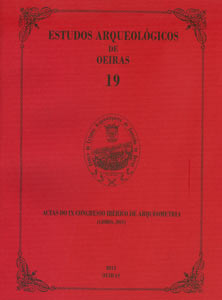Early Iron Age pottery production in Western Poland. An archaeometric perspective
Palavras-chave:
Pottery, Technology, Production patternsResumo
Early Iron Age settlement of the Polish “Old Country” region is a relatively well documented period from recent archaeological fieldworks. Functionally distinct sites, such as strongholds, ceremonial places and cemeteries have been found, covering the chronology between the sixth and the fifth century BC. The results of an archaeometric study undertaken with the aim of approaching the production technology and providing some insights into the probable local or non-local provenance of the main pottery types found in such sites are here reported. Selected pottery samples and modern raw clays from three almost exactly coeval but functionally distinct sites (the stronghold of Starosiedle, the ceremonial place of Kozów, and the cemetery of Sękowice) were characterized by different techniques, such as thin-section petrography, X-ray diffraction (XRD), scanning electron microscopy (SEM) and X-ray fluorescence (XRF) spectrometry. Resulting data indicated the sharing of a single technological tradition among the three sites with no particular specialization concerning the functionality of each site. This tradition is characterized by the general use of non-calcareous illitic clays, which showed a high presence of kaolinitic clay minerals in the case of Starosiedle pottery and a high content of chlorite clay minerals in the case of pottery from Kozów. All the pottery types were fired under predominantly reducing conditions at relatively low temperatures between 700 and 750 °C.
Downloads
Publicado
Como Citar
Edição
Secção
Licença
Os artigos publicados são da exclusiva responsabilidade dos Autores.
É expressamente proibida a reprodução de quaisquer imagens sobre as quais
existam direitos de autor sem o prévio consentimento dos signatários dos artigos
respectivos.




